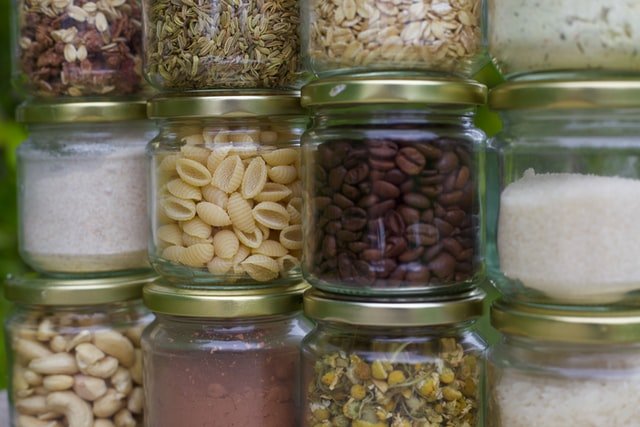If the past two years have taught us anything, it’s that we need to be prepared. Getting ready for a disaster is just common sense.
Hurricanes, tornados, and wildfires are increasing in severity. Economic disruptions caused by pandemics, wars, or inflation can cause household emergencies.
This does not have to be done with a scared doomsday philosophy. Preparation is part of the natural world - just ask any squirrel. Make room in your monthly budget to purchase supplies or learn a new skill.
This article will share with you the top 5 steps to getting ready for a natural or economic disaster.
Water
Food
Heat
Sanitation
Water
Water is the most important resource in the world and one we often take advantage of. Having a way to safely filter “city” water and save your own is very important.
Having a three-week supply of drinking water should be the minimum for each family member. More water is necessary for brushing teeth and cooking. Bathing, even a sponge bath, may be a luxury in certain situations.
Water can be a hard thing to manage as a preparation item because it is heavy and takes up lots of space. In addition, to storing water, you need to think about purifying water.
Chlorox (which is what the government uses), is a cheap and easy way to kill bacteria in your water. The Center For Disease Control recommends 8 drops of bleach for every gallon of water.
So in addition to storing water, store a gallon of bleach and an eyedropper. especially if you may only have access to tap water.
Cistern
If you are in a home equipped with gutters you can set up a rain barrel or a small cistern tank to catch rainwater. This is a very efficient system and one I used for twenty-five years.
Read my article EVERY DROP COUNTS: RAINWATER HARVESTING 101
In an apartment, it can be harder to collect rainwater because you don’t control the gutters or necessarily have somewhere to place a rain barrel. Here are some tips for gathering rainwater for urban residents:
If you live in a communal condominium or townhouse community you may be able to work with neighbors to develop a rain catchment system on the property.
Watch how the rain falls around your balcony or patio. You may be able to set up a mini gutter to catch rainwater even in a small space. With balconies make sure you are aware of weight limits!
Storage
Water storage is something you should consider especially if you don’t have a cistern or rain catchment system set up. Keep in mind weight limits as water is very heavy!
If you are in an apartment or small home you may have to think creatively. For example, a nice trunk or window seat can hold many bottles of water. Under the bed is a great space to store water and emergency food.
At the very least you can purchase bottled water for emergencies. Bottled water has a shelf life of two years according to the USDA. It’s easy enough to switch out. Just remember to recycle those plastic bottles!
These stackable 5 gallon containers are fabulous if you have a place to put them.
2. Food Storage
Food storage is often the first step to preparing for the next disaster. However, get your water system in place first and then move on to food storage.
Many people shop week to week especially when food is expensive. Make a plan to buy $5-$10 of extra food each week to place in your emergency food area.
When starting out I recommend a dedicated pantry shelf or cabinet for your food storage. This location will obviously be for non-perishable items.
In his book, The Disaster Ready Home, Creek Stewart, recommends starting out by putting in a two-week food supply. Above and beyond what you are purchasing for your current needs. (By the way, I highly recommend his book!)
When deciding what to stock up on initially follow these three tips:
Buy things your family loves to eat
Buy foods that are easy to prepare
Buy things that make good one-pot meals
Don’t forget to stock up on food for your pets
Three Months Supply
After you have gotten a full two weeks of meals in the pantry it’s time to expand. You are going to start changing your mentality a bit.
When we are envisioning having to rely on emergency food only for three months we want to consider health needs. Mac and cheese will not cut it at this stage of the game.
Make sure you are buying a variety of foods. Don’t forget herbs and spices which can go a long way to making the same food such as rice taste vastly different.
During the first half of the pandemic, I realized I had A LOT of pasta stored. Fortunately, I also had fresh herbs and spices and plenty of home-canned produce.
Keep These in Mind When Storing Food
Oxygen causes food to go stale. Keep packaged food in containers
Containers also will protect your supplies from pests. Monitor your storage areas.
Heat will degrade food. Store food in a cool dry location. (sometimes the basement is not the best location).
Freeze-Dried Foods
The “prepper” industry has become big business. What used to be a food geared towards backpackers is now sold in 5-gallon containers for persons that want to stock up.
Freeze-dried foods have been ultra preserved by freezing and then quickly turning the water to vapor. Leaving the food totally dehydrated but with taste and nutrients.
Pros of Freeze-Dried Food
Shelf life of 15 - 20 years
Retains its nutrient value and flavor
Does not need chemicals or added salts(although read those labels!)
Lightweight and easy to transport
Easy to cook - just add hot water
Cons of Freeze-Dried Food
Very expensive - talk to Santa!
Some examples of costs from Amazon at the time of publishing.
Mountain House Beef Stroganoff #10 Can Freeze Dried Food - 6 CANS $349.00
To give you an idea each can has ten one-cup servings. 60 total servings.
Valley Food - Food Storage Kit - Mixed meals $349
5-gallon bucket contains 167 servings of a variety of dishes
Fresh Produce
You may feel like your emergency plan can’t figure in fresh produce. Not true!
There are many ways to have fresh produce even in an emergency situation.
Sprouts
One of the easiest “crops” to grow is fresh sprouts. You will want to have sprouting seeds on hand and a way to sprout them. I am a fan of a simple mason jar with a screen lid.
Sprouts grow in as few as three days for the perfect sandwich or salad topper.
Herbs and greens are easy to grow indoors and if you live in an apartment may be your only option.
Gardening
Having a garden can go a long way towards food security. I spent over 25 years living off-grid on a rural farm. there were times it was - “ok we are eating just vegetables this week!” But I knew my children would never be truly hungry in an emergency.
Living in an urban area I am learning that even a small area can be very productive. Using raised beds or the Square Foot Method of gardening can help you fit a lot of plants in a small space.
Using Grow Bags and planters can turn a patio into a fresh produce palace.
Indoor Gardening
I just finished a blog on Growing Vegetables Indoors a few days ago which tells all about my new adventures in indoor gardening.
Cooking Your Food During An Emergency
Planning how to cook the food in your long-term pantry is just as important as having the food!
Having a variety of ways to cook your food is important. You will also want to consider what you are cooking.
Are you going to be just heating up foods such as soups?
Do you need to get water to boil for 2 minutes or 10 minutes?
Are you cooking meat or baking bread?
These are just some things to think about. Cooking uses fuel that may be expensive or hard to find during a disaster.
A good camping stove can do double duty as an emergancy stove. I love Colemans because they are so sturdy. I think I had three over a thirty year period!
I have fond memories of having fondue on the nights the electricty when out when I was a child. My mother kept extra sterno on hand. She would just melt some cheese and we would dip in bread or whatever else we could find. Make sure you get the old fashioned ones with a stand and a place for fire gel.
If you have the room outside we built an outdoor kitchen. The main reason was for summer meals when it was hot and for canning season. However an outdoor grill and brick oven are nice in a power outage as well.
How Do I Poop If My Utilities Are Down?
Invariably what happens after we eat is that we have to poop! Never fear there are acceptable options.
I did not have indoor plumbing the whole time I was off-grid. For the first seven years, I had an outhouse. After that, I started experimenting with a variety of composting toilets.
Check out my popular article Composting Toilets Are Great
For an emergency just having a five-gallon bucket with a toilet seat lid is adequate. You will also need sawdust - small pet litter works well.
A toilet seat, bucket, shavings, and toilet paper are all you need for an emergency
Preparing to have a way to safely go to the bathroom will do a lot for your mental as well as physical health. Waste can be disposed of in the garbage (provided trash services are running) or buried at least one foot down in a backyard.
How To Heat During A Disaster
If a disaster strikes during the middle of winter then heat is critical. Planning for secondary heat is important.
Wood Stove
If you are a home owner I highly recommend getting a wood stove. The pros are it will last you forever and when properly installed is very safe and reliable.
The cons are a wood stove is an investment. Heating with wood is a lot of work.
However, if you are just planning to use it as supplemental heat and during a power outage then it’s not as much work. Having a fire on a chilly night will make you feel warm and cozy.
Your wood stove can also be an alternative stove and a water heater.
Propane Heat
Propane heat or bottle gas can be purchased in bulk which is nice because then even if the electricity goes out you still have fuel to power stoves, heaters, and refrigerators.
Off-griders have long arguments over which is better - propane or wood for heating.
Propane vent-free space heaters can be hung on a wall and connected to a smaller 100-gallon tank. They come in various sizes that typically heat spaces between 500 - 1000 square feet.
Be Ready
By their very nature, disasters are unexpected, stressful, and may last a number of months. Plan ahead and alieviate some of the stress and frustration.
Author, Ame Vanorio, is the founder of Fox Run Environmental Education Center.









Buying supplemental lights for your plants can be confusing. They come in a variety of colors - the spectrum color not the decor color - and a variety of lighting bulbs.
This guide will walk you through what all those different terms mean and how to figure out what type of light you need for what you plan to grow.